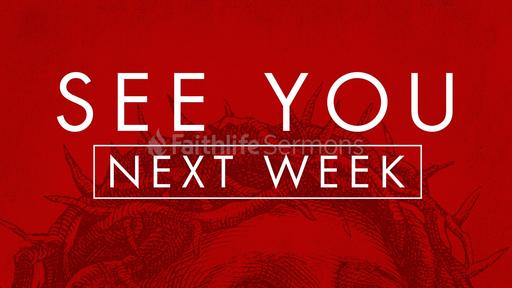Second Thessalonians-Introduction Part 2
Doctrinal Bible Church
Pastor-Teacher Bill Wenstrom
Sunday February 23, 2025
Second Thessalonians Series: Introduction Part 2
Lesson # 2
Just as 1 Thessalonians 1:1a identifies Paul, Silvanus and Timothy as the authors of 1 Thessalonians, so 2 Thessalonians 1:1a identifies these same three men as the authors of 2 Thessalonians.
Like 1 Thessalonians, 2 Thessalonians employs the first person plural pronouns often used with reference to these three men: (1) “we” (1:3-4, 11; 2:1, 13; 3:2, 4, 6-11) (2) “us” (1:7; 2:2, 15-16; 3:1, 6) (3) “our” (1:1, 8, 10-12; 2:1, 14, 16; 3:6-7, 9m 14, 18).
Also, 2 Thessalonians 3:17 also contains Paul’s “signature” as evidence of the letter’s authenticity.
Furthermore, the early church fathers who lived after the apostles and during their lifetime never questioned the authenticity of 2 Thessalonians.
Several fathers mentioned the Pauline authorship of this letter in their writings.
They not only quote from this letter but also they explicitly attribute the citation to Paul or “the apostle.”
These are Irenaeus (130–202) in Against Heresies 3.7.2 cites 2:8; Clement of Alexandria (ca. 150-215) in Stromata 5.3 cites 3:1–2; and Tertullian (ca. 160-225) in An. 57 cites 2:4 and in Marcion 5.16 cites 1:6–9; 2:3–4, 9–12; 3:10.
Second Thessalonians is also included as a Pauline letter in both Marcion’s canon (ca. 140) and in the Muratorian Canon (ca. 170).
Therefore, no one in the church questioned the Pauline authorship of 2 Thessalonians for almost two thousand years.
However, despite the clear identification of Paul, Silvanus and Timothy as the authors of 2 Thessalonians, rationalistic critics who rejected the inspiration of Scripture called into questioned the authenticity of this letter.
J. E. C. Schmidt and F.C. Bauer not only questioned the authorship of this letter but also many of Paul’s traditional letters as part of his reconstruction of early Christianity.
Bauer argued that 1 and 2 Thessalonians were disputed or non-authentic letters as opposed to the uncontested or authentic letters of Romans, 1 and 2 Corinthians and Galatians (Baur, Paul, 2:314–40; 1:260–381).
Despite his arguments, many of his assumptions on which he based his historical and literary conclusions have been found by other scholars as lacking real substance.
So today in the twenty-first century, the authenticity of 2 Thessalonians like 1 Thessalonians is not questioned and widely acknowledged.
Just as 1 Thessalonians 1:1 identifies the recipients of First Thessalonians as the Thessalonian Christian community, so 2 Thessalonians 1:1 identifies the same group of individuals as the recipients of Second Thessalonians.
They were new converts to Christianity who lived in the city of Thessalonica (cf. 1 Thess. 1:1).
Acts 17:1-10 records Paul establishing the church in this city.
This passage reveals that Paul taught in the Jewish synagogue in Thessalonica.
Consequently, “some of the Jews” and a “large number of God-fearing Greeks and not a few prominent women” were converted.
This passage teaches that eventually Paul and Silas had to leave Thessalonica because the Jews were jealous and incited the populace to turn against them.
This text would indicate that the church in Thessalonica was primarily Jewish.
However, this passage does not tell the entire story.
Undoubtedly, as the text says, the Jews were jealous of this response by their fellow Jews to Paul’s gospel.
However, 1 Thessalonians 2:14 would indicate that they were also jealous of the Gentiles in this city trusting Jesus Christ as their Savior.
This verse records Paul telling the Thessalonians that they became imitators of the churches of God in Christ Jesus that are in Judea.
Then, he says that they suffered the same things from their own countrymen as the saved Jews in Judea did from their own countrymen!
Notice the distinction Paul makes between the Thessalonians suffering persecution at the hands of their own countrymen and the Jewish believers suffering at the hands of their fellow Jewish countrymen.
This makes clear that the Thessalonians were primarily Gentile.
Thus, the Jews in Thessalonica would have also been jealous of the Gentiles in this city responding favorably to Paul’s gospel.
Indeed, Paul teaches in Romans 11:13-14 that he magnifies his ministry to the Gentiles in order to make his fellow Jewish countrymen jealous and thus save some of them.
Therefore, Paul must have had a ministry among the Gentiles in Thessalonica.
Another clear indication that Thessalonian Christian community was in fact primarily Gentile rather than Jewish is Paul’s statement in 1 Thessalonians 1:9, which records Paul asserting that the Thessalonians turned to God from idols to serve the living and true God.
The Jewish people were no longer practicing idolatry upon their return from Babylon in the fifth century B.C.
The gospels make clear that the practice of idolatry was no longer found among the Jewish people.
However, the pagan Gentiles living in the first century A.D. were totally and completely immersed in the practice of idolatry.
Therefore, this statement in 1 Thessalonians 1:9 is a reference to the fact that Paul was writing to Gentile Christians.



